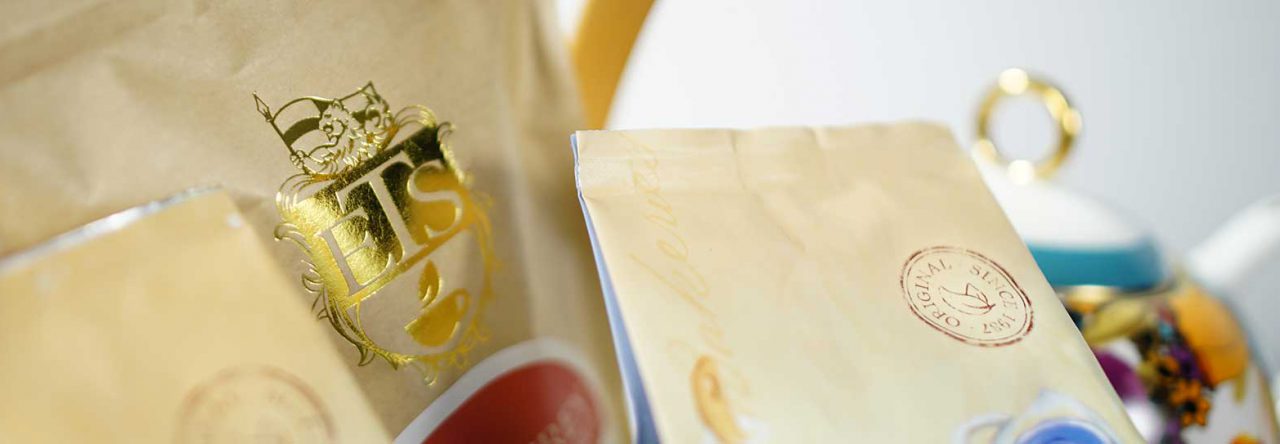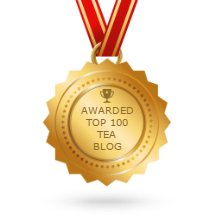[Editor’s note: We are welcoming a new author on our blog – Elise Nuding! Let us know what you think of her first posting.]
The 23rd of January 2012 marked the beginning of the Chinese New Year, ushering in the Year of the Dragon. The dragon is highly esteemed in Eastern cultures as it is associated with power, strength, and success, and people born in the Year of the Dragon are said to embody these qualities. These associations are so strong that the Chinese Han character for dragon (“long”) is the same character that symbolises emperor. The dragon is also auspicious, and so the Year of the Dragon is considered to be the luckiest year in the zodiac cycle—this bodes well for 2012!

Very nice, you say, but what does all of this have to do with tea?
Well, ostensibly nothing. However, as dragons play such an important role in Eastern cultures, they inevitably find their way into many names and descriptions, including those of tea. To welcome the dragon, I felt it was worth highlighting a few teas with dragon-inspired names. These could be a starting point for bringing more of the free-spirited, powerful dragon into your tea drinking this year. In fact, in addition to the zodiac, the Chinese calendar also cycles through the five elements and it just so happens that the element for this 2012 dragon is water—what an auspicious element for a year sure to be filled with tea drinking!
Before getting into specific teas that include dragons in their name, let’s start with a whole category of teas. I am talking of course about Oolong teas, as the English word “oolong” comes from the Chinese for “black dragon”. There are several origin stories for the name, one of which puts it down simply to appearances: the dark leaves of oolong teas curl and wind around themselves just like the body of a dragon. The “black” in the name makes oolong tea even more appropriate for the Year of the Water Dragon, since the element of water is associated with the colour black.
Now onto some specific teas.
Dragonwell (Longjing): This is one of the better-known Chinese green teas. There are many versions of the legend behind its name, but here is one that I’ve heard:
During a drought season in ancient China only one well continued to supply water. As dragons are thought to have control over the coming of rain and water, it was believed that a dragon inhabited this particular well and kept it from running dry. The water from this well was used (among other things) for growing tea leaves. Therefore, from that time on the tea grown in that area carried the name of Dragonwell in honour of the water dragon. The association with water makes this tea particularly suitable for the coming year!
Nine Bend Black Dragon: This Chinese black tea also has an interesting story behind its name. Many dragon teas have “nine” in their name because the number nine is also considered auspicious in Chinese culture. This is due to its phonetic similarity with the word for “long lasting”. The number nine is often associated specifically with the dragon who is considered to have nine forms, nine attributes, and nine children.
Dragon Pearls: In this tea the tea leaves are hand-rolled into small balls reminiscent of pearls. There are many varieties of tea pearls, but Chinese green tea pearls often have “dragon” included in their name. Pearls often shows up in connection with dragons, as, like the dragon, pearls indicate good luck and prosperity. A dragon with a pearl is even more auspicious than a pearl-less dragon, and in Chinese art dragons are often depicted holding or chasing pearls.

Jasmine Dragon Pearl: Sometimes known as jasmine tears, this green tea is similar to the green tea pearls but is distinguished by the addition of the floral scent of jasmine. As jasmine can have a calming effect, this tea fits nicely with the water dragon; she tends to be quieter and more perceptive than other dragons due to water’s ability to calm her energy and temperament.
Snow Dragon White Tea (Xue Long):Like “oolong”, this tea is named after the dragon because it consists of tiny white tea leaves hand-rolled into spirals reminiscent of a dragon’s shape (some say specifically a dragon’s tail). Dragon tea drinkers will find this delicate white tea a nice complement to the green, black and oolong teas listed above, as it provides a lighter, milder cup full of dragons.
These are just a few of the many dragon teas that exist. So, in keeping with the dragon’s free spirit and creativity, try out some new dragon teas and bring some more of the dragon into your tea-drinking (and life!) this year.
© Online Stores, Inc., and The English Tea Store Blog, 2009-2014. Unauthorized use and/or duplication of this material without express and written permission from this article’s author and/or the blog’s owner is strictly prohibited. Excerpts and links may be used, provided that full and clear credit is given to Online Stores, Inc., and The English Tea Store Blog with appropriate and specific direction to the original content.



Leave a comment